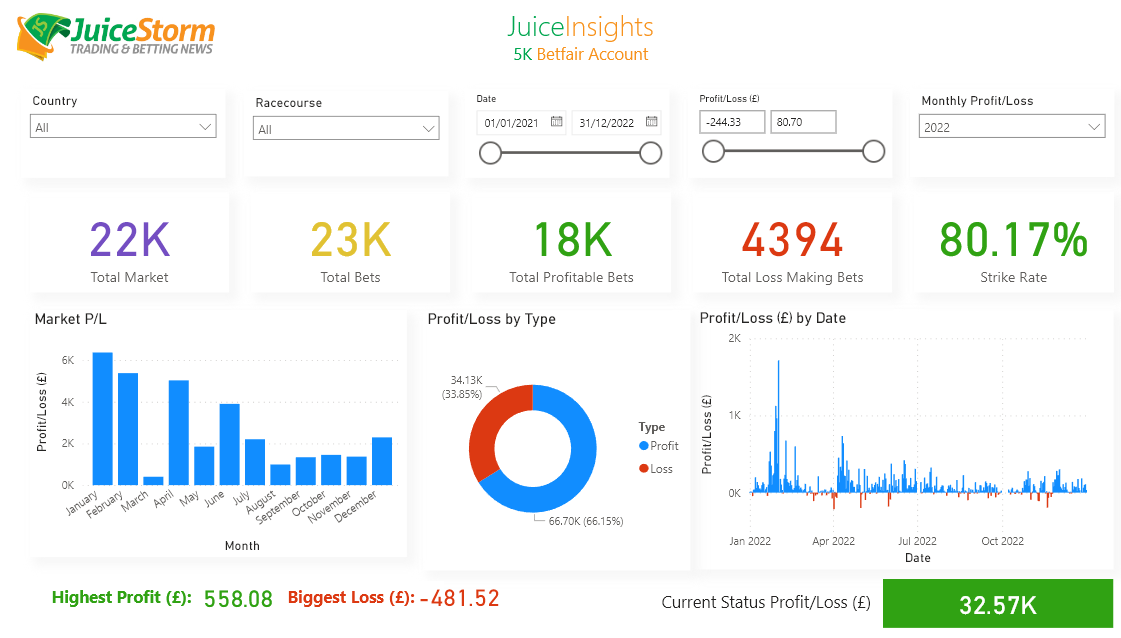Horse Racing — Rule 4
- The TopTrap Greyhound Profit And Loss Account On Betfair - March 17, 2022
- Betfair Best Execution – 11 Requested & Filled At 320 - January 16, 2022
- BTB System e-book - March 13, 2015
Everything you need to know about Rule 4
The most important thing to understand when matched betting or arbing on horse racing is rule 4. This causes more trouble and worry to inexperienced arbers than anything else, and yet problems can usually be avoided.
Rule 4 may be implemented by the bookmakers if a horse is withdrawn after they compiled the odds which you bet at. There is a concise explanation of why along with the standard table of deductions in this post.
I strongly advise you print out a hard copy of this table and keep it handy.
Betfair also do a reduction but with 2 important differences – they use their own scale of reductions and they implement them immediately the non runner appears on the site. Bookies frequently leave their odds unchanged after apparently removing a non runner, leaving you open to a loss if you match up with the odds on Betfair.
Non runners are listed at Betfair in their rules tab – it is a good idea to set the rules tab to be the default at Betfair so that you will see any non runners when you go to the race market.
1. What to do if there is a non runner after you have placed your bet and your lay.
The best strategy is to leave everything exactly as it is. Unless the horse wins you will get back what you would have got before. If the horse wins the chances are that you will make about the same or more than you would have done before, depending on the size of the Betfair reduction factor – on very few occasions you might make a small loss but these are outweighed by the times your win increases. Also if you fiddle with things and there is another non runner this could throw all your careful calculations out of the window.
2. What to do if there is a non runner between placing your back bet and your lay bet.
This can happen occasionally, and you need to know what to do. You need to work out what the rule 4 is at the bookmaker before you place your lay, which means you need to know what the odds were, and as soon as the bookmaker removes the non runner they remove its odds too. The best place to look is http://www.oddschecker.com. Find the race and click on the name of the horse, and you will get a table of the odds against time. Scroll until you find the last available price of the non runner at the bookie concerned, and work out the reduction from those using the rule 4 table. If no price is available at your bookie (some seem to report SP only) then you will have to make an educated guess from the odds offered at other bookies. Once you have adjusted the odds for the rule 4 (see below) you can match out the bet accordingly at Betfair.
Adjusting odds for a rule 4, example of a 15p rule 4 on decimal odds of 4.5:
15% of (4.5-1) = 0.525 (subtract 1 from decimal odds because they include the stake and there is no rule 4 on stakes)
4.5-0.525 = 3.975
so 4.5 with a 15p rule 4 becomes approximately 3.97
3. What to do if there is a non runner showing at Betfair when you find the arb.
Unless you are certain that there will be no rule 4 on the odds at the bookmaker, leave the race alone and find another arb. In order to work out whether the book has been adjusted you may need to calculate a book percentage – see below.
How Do I Know If A Non Runner Is Safe?
This is the million pound question, and I”m afraid there is no quick, easy answer. If you bet in races in which there are non runners, sooner or later you are almost certain to get caught out. It happens to the most experienced arbers, and sometimes looks like blatant robbery by the bookmaker. If it happens all you can do is shrug your shoulders and move on, as experience has shown that the only result of complaining is an immediate and severe limiting of your account. I have never managed to get a bookmaker to back down over a rule 4.
There are plenty of times when it is safe enough to bet on a race with a non runner showing, and the aim of this post is to guide you as best I can to recognize when it is probably safe to arb and when it is not.
The biggest danger signal is if there are arbs in the same race on several horses after a non runner with a large reduction factor at Betfair. Never take an arb after a non runner if this is the case. If you use our arb finder you will soon learn to recognize the obvious situations where a book has not been reformed and ignore those races without even wasting time loading the relevant race at Betfair.
The past odds of all horses can be found at http://www.oddschecker.com as described above. The non runners appear in the rules tab at Betfair with their reduction factor and the time of withdrawal.
Firstly, if the non runner was 16-1 (17.0) or higher at the bookie you are betting with, there will be no rule 4.
The time of withdrawal
Non runners may appear at Betfair any time after the market is put up. If the time of withdrawal is later than the current time, then the horse was withdrawn yesterday and you are perfectly safe.
Under any other circumstances than this, there is a possibility that the bookie has not adjusted, and the time of withdrawal is not a definite indication either way. The longer ago the non runner was, the more likely you are to be safe, but you must use other factors to determine the safety of the arb.
The reduction factor
This is Betfair’s equivalent of rule 4. Unlike the bookmakers, who have a stepped scale of reductions (5p, 10p etc), Betfair has a sliding scale from 0% upwards. Normally the reduction factor is in the same ballpark as the rule 4, so an 11% reduction at Betfair is likely to be a 10p rule 4 (there are cases when this is not so, and you should never assume the rule 4 deduction from looking at the Betfair reduction factor alone). As a quick rule of thumb, if the Betfair reduction factor is less than 4% it is unlikely that the bookies will charge a rule 4. (Note in the special case of races with reserves in, most of which are Irish races, the reserves have Betfair reduction factors of 0%, but may possibly trigger a rule 4 at some bookies. Always check Irish races for reserves, which are listed at the bottom of the field at Betfair with “reserve” in the space where the jockey is normally found. For safety, avoid these races. There is more info on reserves here.)
Previous odds displayed at the bookie
Some bookies display the prices at which the horses have previously available on their race card. If there has been a non runner and there are several horses whose odds have been cut, it is probable that a new market has been formed. This is not foolproof, and many bookies do not display this information. They also, most unhelpfully, rarely display the odds of the non runner.
Using oddschecker
The table of odds against time that you get when you click on the horse’s name at oddschecker is very useful for working out whether the bookie has reformed. Even if the odds on the non runner are shown as SP at that bookie, you can look at the time of withdrawal at Betfair and at the table of odds on the favourite and see if there was a sharp drop in odds at around or after the withdrawal time. I usually check at least 2 horses in this way, and find it a useful guide.
To calculate the book percentage
The book percentage is the sum of the reciprocals of all the decimal odds multiplied by 100.
From a real example of a 7 runner race, with decimal odds of 2.75, 6, 6, 7, 7, 9 and 13 the book percentage is:
1/2.75 + 1/6 + 1/6 + 1/7 + 1/7 + 1/9 + 1/13 = 1.17 x 100 =117.07%
Now suppose that one of the horses at 6 was a non runner (this would trigger a 15p rule 4). The book percentage drops by 1/6 x 100 = 16.67 and becomes 100.4%.
For most races a safe book percentage is between 110 and 120% – the smaller fields will be towards the lower end, bigger fields towards the higher end of this range. However bookies have been known to charge a rule 4 on a book with a safe-looking percentage. If you see a book percentage below about 110% where there is a non runner and the bookie is not advertising special book percentage odds (eg 105% book) treat it with caution.
Calculating a book percentage is tedious. There is a post here with a table of reciprocal odds to help speed up the process. As you become more experienced you will develop a “feel” for when a book has been reformed and will rarely need to actually do this calculation.
Bookies who do not charge 5p rule 4
Many of the bigger bookmakers such as Hills, Ladbrokes and Stan James “do not charge 5p rule 4”. This is a seriously misleading statement. These bookies do not charge a rule 4 on a non runner which would have produced a 5p rule 4 providing that there are no further non runners triggering a further rule 4 deduction. It is therefore not safe to take an arb at these bookmakers when the non runner would have produced only a 5p deduction, as another 5p non runner will result in a total reduction of 10p, a 10p non runner will mean 15p etc.
Arbs that are big enough to cover the rule 4
Sometimes an arb occurs after a non runner where the arb is big enough for the rule 4 not to matter. As long as you are certain of the size of the deduction at the bookie it is perfectly safe to take these.
For example if you find an arb at 2/1.8 and you know there is a 10p rule 4 at the bookie, the arb becomes 1.9/1.8 which is still an arb.






Comments are closed, but trackbacks and pingbacks are open.